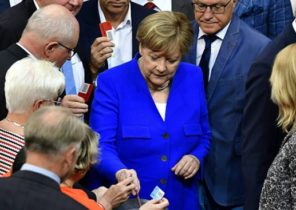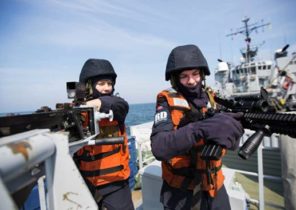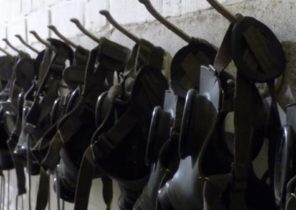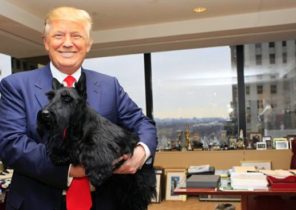As it is not visible to the Ukraine properly remembered and celebrated at all levels of the century “the miracle on the Vistula”. Meanwhile, we are talking about one of the most significant events of modern history, when troops restored second Polish Republic with the support of the army of the UNR and volunteers from a number of Western States broke the plans of the Kremlin and the Comintern (Bolshevik these twin brothers) “drink the red horses by the water of the Vistula and the Rhine”, that is, to capture and sovietise Western Europe. In order to the troops dated 2 July 1920, the Western front commander, Mikhail Tukhachevsky wrote: “In the West decide the fate of the world revolution. Using the corpse of white Poland lies the road to world conflagration. Bayonets incur happiness and the world of toiling humanity… on Vilno, Minsk, Warsaw — March!”. But it didn’t work out as hoped, the Bolsheviks. And last but not least — thanks to those Ukrainians who prevented this March.
However, perhaps it is good that the current government and with the current state of Ukrainian society, in particular, intellectual community, this celebration will not be. We are talking about difficult historical and philosophical issues on which it would be pre-to develop a consensus, and then turn to the occasion of the international level. You can, of course, as hitherto, be limited to General after saving tens of European States from the “happiness” of the establishment in 1920 of the totalitarianism of the Soviet sample with the revolutionary committees and “revolutionary consciousness”, the secret police, mass executions of “bourgeois”, concentration camps, forced labour, etc., certainly deserves to celebrate the fact that this has not happened, and honor those who are stopped — often with their lives — “combat column” of the Bolsheviks. But what to do with those stories that “protrude” beyond this overall equitable and forcefully testify to the tragedy of the Ukrainian dimension of the events of a century ago?
To visually verify the existence of such stories, in my opinion, it is necessary to turn to classical or at least semiclassical famous Polish film Director Ezhi Goffman “the battle of Warsaw. 1920” (“1920 Bitwa warszawska”), dedicated to the events of a century ago and is made with public support. This film, I am sure, known to some readers “Day”; probably he will show some of the TV channels in the near future. But still, let me recall some of the vicissitudes of the film, which features numerous historical characters, and which applies not only to uplift the spirit, but to recreate the letters of the time as possible for large-scale action film.
The film begins with Creator and chief of the red army Leon Trotsky in his armored car dictates a telegram to Lenin that, they say, is the appropriate time to deal with Poland and going further West. Lenin speaks to the Politburo of the RCP (b) brief speech, which supported Trotsky; Lenin adds Stalin, and those present unanimously voted for a campaign of the red army in Poland, Germany, Italy, England and so on. So peaceful Poland is moving (very effectively shown), the invasion of the “red horses”…
All this would be funny if it did not inspire sadness. And here’s why. Attempt campaign of red army to the West “through the corpse of white Poland” comes at a time when the second Rzeczpospolita and a half years fought a war with Bolshevik Russia. What’s interesting: this war began on 6 January 1919, when the Red army drove the poles from the occupied Vilnius. At the same time Polish army fought with the independent Ukrainian state (ZUNR and UNR), after heavy fighting occupied (this term was used by piłsudski) Galicia and Volhynia, and in addition a significant part of Belarus. 8 December 1919, the allies determined the Eastern border of the Polish state in the area, which later was called the “Curzon line” (named by the British Minister of foreign Affairs), but Warsaw continued occupation of significant territories to the East of this line. Moreover, the government of UNR in exchange for a military Alliance was forced to accept the legitimacy of the Polish occupation of Galicia and Volhynia. However, nothing of this in the film, but the Polish referees at the time of the appearance of the ribbon in 2011 unanimously noted “the perfection of historical ideas and avoid stereotypical ideas of the campaign of 1920 as the clash of the Polish people with the eternal enemy — Russia”, as they say, it was a “war not with Russia but with Bolshevism.” Meanwhile, the Bolsheviks were able to mobilize for war with the Commonwealth the great masses of the captured white army officers and Cossacks, and even the tsarist generals under the slogan of “struggle against the age-old Polish enemy”, and Pilsudski was able to gather at the front of all who could bear arms; was charged with the protection of bridges, Railways and municipalities in the cities — under the slogan of “struggle against Russian imperialism”…
However, the latter in the film we see is the national movement against the Russian. Hear and mention of Ukraine and Ukrainians: so, during the meeting of the generals Jozef Pilsudski (who plays the famous Daniel Olbrychski) says Zamosc until the last drop of blood will protect the Ukrainians of General Bezruchko, and during a conversation with Polish Prime Minister Grabski says: “Kiev we give the Ukrainians”. And Vinnitsa, Zhitomir and Uman? I’m not talking about Lutsk, Ternopil and Lviv… But these words of the movie character Polish critics believe that the lack of evidence in the second Commonwealth imperialist intentions. But what about Vilnius, located considerably East of the “Curzon line”? Because of Polish attacks on him “bourgeois” Lithuania in the war of 1920 was an ally of the Bolsheviks! An eloquent fact, isn’t it?
Although the “Warsaw battle” shows, and a detachment of allied troops to Poland — the Cossacks, in clothes of the Kuban. It was don and Kuban Cossacks, who fought against the “Reds.” But neither the first nor the second did not consider themselves Russian! Kuban, for example, called himself, or by individual people (“Chernomorets”) or Ukrainians. But why Hoffman took on the role of their chieftain Muscovite Alexander Domogarova who speaks otherwise than the proportion Kuban? It is also “the perfection of historical ideas”? On the other hand, the image in the film of the red army with its specific spirit looks pretty realistic (read “Diaries” Babel, who was camping with the 1st cavalry army), though sometimes too caricatured.
And that’s shown in the film Soviet history is the almost continuous “krilata crane”. Lenin obviously plays a young actor who would agree to the role of Bukharin and Stalin in the movie is shown somewhere in the 60-year-old “father of Nations”, while the real Stalin at that time was 41, he was a dashing man with a cheerful mustache. Tukhachevsky and his staff is a bunch of fools, and in the meantime contender for the role of the “red Bonaparte”, despite Victor Suvorov, professionally built, the plan for the defeat of the Commonwealth. In its basis the idea was to cross the Vistula downstream and bypass Warsaw from the rear (something like the German “Schlieffen of braids” that the First world was the basis for the plan of attack on Paris). With a substantial difference: the Germans had no strategic cavalry, Tukhachevsky and it was the 3rd cavalry corps guy, who was moving along the border with East Prussia, getting out of resources (even a brigade of German volunteers joined the Red army to beat the opposing poles). If someone thinks that the strategic cavalry of the red army in 1920 is something of a troops of the XIX century, it is deeply mistaken; such formations were composed of not only the cavalry, but also artillery, vehicles, armored cars, planes and trains. Moreover, the plan Tukhachevsky was even better than the plan of the Kaiser’s General staff in 1914, th: at a critical juncture of the South-Western front had to pass West 1-cavalry army of Budyonny and she needs to cross the Vistula South of Warsaw, closing the ring around the Polish capital and the main forces of the Polish army…
All of this, the audience sees or knows.
But the plan Tukhachevsky was a fiasco: he was too class-Marxist and did not consider national rise poles. And yet — the ambition of Budyonny and Stalin, who tried to storm the lions, received back, then belatedly threw the 1st cavalry army in the Warsaw area — near Zamosc has undergone a layered defense of the Ukrainian military Mark Bezruchko. On that March “the red horses” was finished, having suffered a fiasco.
Therefore, among the final shots of the “battle of Warsaw” there is a scene when, after the failure of the offensive of the red army in the Polish-Lithuanian Commonwealth Lenin sweeps a hand with card red flags and says: the world revolution failed, will have to build socialism in a single country. To put it mildly, is bullshit. But the bullshit is clear: Goffman significant part of his childhood and teenage years lived in the Soviet Union (first family in 1940 were deported to Siberia, where he remained until 1945, then in 1950 -1955 years he studied at Moscow VGIK), so not only read, but studied the Stalinist “a Short course history of the CPSU (b)” — a compendium of socio-historical mythology of the Bolshevik era. It seems that the Stalinist myths that are told about the events of 1920, largely turned into stereotypes of perception of the world, and not only with Hoffman. Therefore, in the film about the “miracle on the Vistula” and it sounded as if Lenin’s phrase. Actually this is typical of the Stalinist formula, which he started to cover up the expansionist policy of the Soviet Union in the late 1920s and finalize that at the end of the 1930s, convinced of the impossibility to initiate a successful “internal” revolution, even in the military-political help of the Soviet Union, the example of Republican Spain, and fully becoming a position of realization of “revolution from outside,” brought on bayonets of the red army. And in the early 1920s, the Comintern and the RCP (b) from all forces tried to foment world revolution — in Italy, in Germany, in Estonia, in China, in Persia, in Brazil and in the same Commonwealth, where a special “red” units operated until 1926.
But this is not all that you should to understand that not all measurements of the Ukrainian war in 1920. A serious conversation requires caused by the imperialist policy of the Warsaw split of the Ukrainian forces. So, part of the Ukrainian Galician Army went first white, then to red, part of the de facto neutral, the part of left-wing socialists headed by Vinnichenko! or adopted by the Bolsheviks, and became their companions and so on. And the case in Primakov’s red Cossacks — yet another connection strategic cavalry? And yet, the 1st cavalry army, with its command and most of nutdinov of ethnic Ukrainians? Moreover, in the summer of 1920 the Ukrainian rebels Black Yara were several blows to cut off the supply routes of the South-Western front, capturing Kiev, Kanev and Cherkassy, and thus cause complete failure of the offensive front to the West. But they hesitated, seeing in the Commonwealth as a reliable ally. And they were right… on the other hand, if the Bolsheviks already “liberated” all Ukrainian lands to the East of the “Curzon line”, what would happen to the Ukrainians under Polish occupation still have not experienced any famine or the GULAG or the Great Terror? The irony of history…
And finally, I note that, first, we don’t have to idealize its past — nor Hmelnitchiny or Koliivschina, nor the OUN and UPA (is prohibited on the territory of the Russian Federation — approx. ed.) — there is no need to devalue and degeroizirovat. What affects war in 1920, it would be worth to have and Ukrainian films about these events where the story would have appeared in its fullness and drama, and the historical characters would not look cartoonish.






